 Your new post is loading...
 Your new post is loading...
Browse the GTC conference catalog of sessions, talks, workshops, and more.
You might think that plants grow according to how much nutrition, water and sunlight they are exposed to, but new research... shows that the plant's own genetics may be the real limiting factor.
"This could have potentially big implications for the agricultural industry... Our model plant is in the same family as cabbages, so it's easy to imagine creating giant cabbages or growing them to the desired market size faster than at present."
It was previously assumed that plant growth was generally resource-limited, meaning that plants would only grow as large and fast as they could photosynthesise. However, Dr Pullen and his team present evidence that plant growth is actually "sink-limited", meaning that genetic regulation and cell division rates have a much bigger role in controlling plant growth than previously thought:
"We are proposing that plant growth is not physically limited by Net Primary Productivity (NPP) or the environment, but instead is limited genetically in response to these signals to ensure they do not become limiting."
By genetically altering the growth repressors in Arabidopsis, Dr Pullen and his team were able to create mutant strains. They identified the metabolic rates of the different plant strains... as well as comparing the size and weight of the plants... also grew the mutant plant strains at different temperatures to see if this changed their results: "When grown at different temperatures we still find a difference in size"...
The impact of these results is wide-reaching, and... it may even change how we think about global climate data: "Climate models need to incorporate genetic elements because at present most do not, and their predictions would be much improved with a better understanding of plant carbon demand."
https://www.eurekalert.org/pub_releases/2017-07/sfeb-gml070117.php
Via Alexander J. Stein
In the late 1990s, Sainsbury’s and Safeway... both offered GM tomato purée... GM and non-GM cans of purée stood side by side on their shelves, the former some 18% cheaper... The cans were conspicuously labelled and pamphlets explaining what GM was all about were to hand nearby. But when the stock ran out and it was time to re-order, the anti-GM food balloon had gone up and the product was discontinued...
In 1999 Marks & Spencer announced that it was removing all GM foods from its shelves. (In a House of Lords inquiry at that time, M&S said their customers demanded it. When asked by their lordships how many customers that meant, it turned out to have been rather a small percentage. But those who positively wanted GM were, it seems, even fewer in number)...
All the other retailers followed suit: the UK’s retail industry was to be GM-free – or was it? In fact some GM products... were always to be found... Then there is the question of GM fodder for animals.... retailers said that they would not sell any products from pigs or poultry that had been exposed to GM feeds...
Until, that is, when Asda became the first of the leading UK supermarkets to abandon its commitment to eggs and poultry fed with GM in 2010... But by then public opinion on the issue had become almost completely mute... GM-feed for pigs and poultry was no longer to be excluded... there appears to have been no noticeable consumer rejection of products from animals fed GM...
More than half the world’s cotton is GM, so this is likely to be the case with products on sale in the UK. There is no obligation to label GM cotton so one cannot be sure, but nobody seems to ask and few seem to care...
Public interest in this subject has largely waned... Though one can never be quite sure, it does begin to look as though the GM issue will fade away in the fullness of time, in England at least, even if it takes a while. I suspect GM food and crops will become commonplace and the protesting community will veer off in another direction, chasing new demons.
https://theconversation.com/whatever-happened-to-bans-on-gm-produce-in-british-supermarkets-51153
Via Alexander J. Stein
p. 305-313: With Asia having some of the fastest-growing economies with over 60% of the world’s population, 34% of the world’s arable land, and 36% of the world’s water resources, the region’s need to overcome formidable challenges and improve its total agricultural production and agricultural productivity are urgent... Feeding and nourishing a larger, more urban, and increasingly affluent Asian population sustainably and equitably will be an unprecedented challenge in the coming years. It will require a more holistic approach to address agricultural production an d productivity more effectively. Increasing production of food, feed, and fiber through the use of modern biosciences and biotechnology is only one among many strategies needed to meet this challenge. Access to modern science and technology will need to be supported by more comprehensive policies on investment, regulations, and education. In addition, while rural areas currently hold most of the world’s poor and hungry, and will continue to do so for many years to come, the urban areas of Asia will require more attention and distinct focus from national governments... Increasing productivity is a development imperative, whether urban or rural, if more agricultural production is to be achieved with reduced arable land, labor, and water in Asia. And therein lies the huge potential for biotechnology as a “green” technology. http://www.apo-tokyo.org/publications/wp-content/uploads/sites/5/Productivity-in-the-Asia-Pacific_Past-Present-and-Future-20151.pdf#page=320
Via Alexander J. Stein, Phillip Trotter
Many varieties of fruit, meat and vegetable are disappearing from our plates, says Rachel Nuwer. Why is this happening, and can we stop the rot?
Trophic cascade effects occur when a food web is disrupted by loss or significant reduction of one or more of its members. In East African Rift Valley lakes, the Lesser Flamingo is on top of a short food chain. At irregular intervals, the dominance of their most important food source, the cyanobacterium Arthrospira fusiformis, is interrupted. Bacteriophages are known as potentially controlling photoautotrophic bacterioplankton. In Lake Nakuru (Kenya), we found the highest abundance of suspended viruses ever recorded in a natural aquatic system. We document that cyanophage infection and the related breakdown of A. fusiformis biomass led to a dramatic reduction in flamingo abundance. This documents that virus infection at the very base of a food chain can affect, in a bottom-up cascade, the distribution of end consumers. We anticipate this as an important example for virus-mediated cascading effects, potentially occurring also in various other aquatic food webs.
Via Ed Rybicki
Scientists say there was a widespread extinction of bees 66 million years ago, at the same time as the event that killed off the dinosaurs. The demise of the dinosaurs was almost certainly the result of an asteroid or comet hitting Earth. But the extinction event was selective, affecting some groups more than others. Writing in Plos One journal, the team used fossils and DNA analysis to show that one bee group suffered a serious decline at the time of this collision.

|
Suggested by
Jed Fisher
|
Diesel exhaust is pretty nasty stuff. Pass an overloaded 18-wheeler clouding up the highway, and that acrid plume of hydrocarbons will overpower even your best little tree air freshener.
Farmers will not be allowed to spray widely used insecticide blamed for declining bee population A widely used insect nerve agent will be banned from use on corn and sunflowers in Europe from the end of 2013 as part of an effort to protect bees,...
EAST LANSING, Mich. — An international team of scientists has developed crop models to better forecast food production to feed a growing population – projected to reach 9 billion by mid-century – in the face of climate change.
Farmers in the U.S.and China should use less fertilizer, freeing it up for application where such nutrients can do the most good...
|
Our global population is expected to hit 10 billion by 2050. Feeding the world without destroying the planet will mean farming smarter.
Chemical triggers that make plants defend themselves against insects could replace pesticides, causing less damage to the environment. New research... identifies five chemicals that trigger rice plants to fend off a common pest – the white-backed planthopper, Sogatella furcifera Pesticides are used around the world to control insects that destroy crops... One of the problems with many pesticides is that they kill indiscriminately. For rice plants, this means pesticides kill the natural enemies of one of their biggest pests, the white-backed planthopper... This pest... causes the plants to wilt and can damage the grains. It also transmits a virus disease... which stunts the plants’ growth and stops them from “heading,” which is when pollination occurs. Left untreated, many of the insects’ eggs would be eaten, but when pesticides are used these hatch, leading to even more insects on the plants. What’s more, in some areas as many as a third of the planthoppers are resistant to pesticides... “Therefore, developing safe and effective methods to control insect pests is highly desired”... Because of the problems of using pesticides, it’s vital to find new solutions to help protect rice plants from infestation. Plants have natural self-defense mechanisms that kick in when they are infested with pests like the planthopper. This defense mechanism can be switched on using chemicals that do not harm the environment and are not toxic to the insects or their natural enemies... Researchers... developed a new way of identifying these chemicals. Using a specially designed screening system, they determined to what extent different chemicals switched on the plants’ defense mechanism... The researchers used bioassays to show that these chemicals could trigger the plant defense mechanism and repel the white-backed planthopper. This suggests that these chemicals have the potential to be used in insect pest management... “This new approach to pest management could help protect the ecosystem while defending important crops against attack.” The next step for the research will be to explore how effective the chemicals are at boosting the plants’ defenses and controlling planthoppers in the field. https://www.elsevier.com/about/press-releases/research-and-journals/chemicals-that-make-plants-defend-themselves-could-replace-pesticides Original article: http://dx.doi.org/10.1016/j.bmcl.2015.10.041
Via Alexander J. Stein
There is currently a great deal of concern about population declines in pollinating insects. Many potential threats have been identified which may adversely affect the behaviour and health of both honey bees and bumble bees: these include pesticide exposure, and parasites and pathogens. Whether biological pest control agents adversely affect bees has been much less well studied: it is generally assumed that biological agents are safer for wildlife than chemical pesticides. The aim of this study was to test whether... nematodes sold as biological pest control products could potentially have adverse effects on the bumble bee... One product was a broad spectrum pest control agent... the other product was specifically for weevil control... Both nematode products caused ≥80% mortality within the 96 h test period when bees were exposed to soil containing... nematodes at the recommended field concentration... Of particular concern is the fact that nematodes from the broad spectrum product could proliferate in the carcasses of dead bees, and therefore potentially infect a whole bee colony or spread to the wider environment. https://dx.doi.org/10.7717/peerj.1413
Via Alexander J. Stein
p. 305-313: With Asia having some of the fastest-growing economies with over 60% of the world’s population, 34% of the world’s arable land, and 36% of the world’s water resources, the region’s need to overcome formidable challenges and improve its total agricultural production and agricultural productivity are urgent... Feeding and nourishing a larger, more urban, and increasingly affluent Asian population sustainably and equitably will be an unprecedented challenge in the coming years. It will require a more holistic approach to address agricultural production an d productivity more effectively. Increasing production of food, feed, and fiber through the use of modern biosciences and biotechnology is only one among many strategies needed to meet this challenge. Access to modern science and technology will need to be supported by more comprehensive policies on investment, regulations, and education. In addition, while rural areas currently hold most of the world’s poor and hungry, and will continue to do so for many years to come, the urban areas of Asia will require more attention and distinct focus from national governments... Increasing productivity is a development imperative, whether urban or rural, if more agricultural production is to be achieved with reduced arable land, labor, and water in Asia. And therein lies the huge potential for biotechnology as a “green” technology. http://www.apo-tokyo.org/publications/wp-content/uploads/sites/5/Productivity-in-the-Asia-Pacific_Past-Present-and-Future-20151.pdf#page=320
Via Alexander J. Stein
An international collaboration... has figured out how to make a longer cotton fiber... could potentially have a multi-billion-dollar impact on the global cotton industry and help cotton farmers fend off increasing competition from synthetic fibers... "This technology allows improvement of fiber quality in upland cotton, which is widely grown everywhere," said Alan Pepper, an associate professor in the Texas A&M Department of Biology... "This will increase the competitiveness of natural cotton fibers versus synthetic fibers, which have been snagging an increasing amount of the market share every year." The overwhelming majority of cotton harvested in the U.S. and worldwide is upland cotton, or Gossypium hirsutum, with more than 6.5 million acres planted in 2012 in Texas alone... A higher-end cotton called Gossypium barbadense is more desirable because of greater fiber length and strength but is late-maturing, low-yielding and more difficult to grow because it requires dry climates with significant irrigation and is less resistant to pathogens and pests. "For a long time cotton breeders have been trying to develop upland cotton with the fiber qualities ofbarbadense cotton... Globally, everybody's trying to do it. Economically, it's a huge deal, because every millimeter you add to fiber length adds that much to the price of cotton when the farmer sells it." The researchers' method increased the length of the fiber by at least 5 millimeters, or 17 percent, compared to the control plants in their experiment... The cotton plants developed in the project technically are genetically modified organisms (GMOs)... "What we're doing is a little different," Pepper said. "We're not actually adding in a gene from another species. Rather, we're knocking down the effect of one of the genes that's already in the plant... This was pure basic science, seeking to understand the biological function of a gene... And sure enough, the phytochrome 'knock-down' plants had all these phenotypic changes associated with it [phytochrome], and one of them was longer fiber." The discovery was especially important to Ibrokhim Abdurakhmonov, the lead author of the study who received his master's degree in plant breeding from Texas A&M in 2001 and is now a professor in his native Uzbekistan. The landlocked agricultural nation that borders Afghanistan historically has relied heavily on cotton... Uzbekistan currently accounts for around 10 percent of world cotton fiber exports. "Sustainability and biosecurity of cotton production is pivotal for the Uzbekistan economy because agriculture accounts for 24-to-28 percent of the country's gross domestic product... The increased value of longer and stronger lint, at 10 cents per pound, would be at least $100 per acre more income from the lint for each new cultivar using this technology. New markets for longer, finer, stronger and more uniform cotton lint fiber, as well as early maturity and increased yield potential could further increase estimated economic value. Our anticipation of possible improvement of resistance to abiotic stresses via phytochrome RNA interference further adds to its commercial potential." ... Press release: http://www.science.tamu.edu/articles/1157/ Original article: http://dx.doi.org/10.1038/ncomms4062
Via Alexander J. Stein
The extensive exploitation of marine resources by modern fisheries (...) has wide-ranging effects on marine ecosystems. Across the world's oceans, size-selective harvesting by commercial fisheries has been a key driving force behind changes in phenotypic traits such as body size and age at maturation (1–3). These changes have altered the trophic structure of the affected ecosystems, disturbed predatorprey relationships, and modified trophic cascade dynamics (3, 4). Phenotypic changes can involve both ecological and evolutionary reactions to the effect of fishing, and there has been much debate about the relative roles of these reactions. This is important because genetic changes could result in long-term reductions in catches. Recent work has provided evidence for fisheries-induced evolutionary changes, with important implications for the sustainability of fisheries. How Fisheries Affect Evolution
Andrea Belgrano, Charles W. Fowler Science 6 December 2013:
Vol. 342 no. 6163 pp. 1176-1177
http://dx.doi.org/10.1126/science.1245490
Via Complexity Digest
Biotech, farmer associations key for climate adaptation - panel Reuters AlertNet (blog) LONDON (Thomson Reuters Foundation) - An increasingly extreme climate is presenting new challenges to farmers across the world, and biotechnology and greater...
Nearly 80% of bumblebees imported from Europe carry pathogens that pose a threat to UK native honeybees and bumblebees, say scientists.
In Asia, the consumption of animal products has been steadily increasing, thus creating a greater demand for feed crops. As the quality of life progresses, demand for animal protein also increases.
A rapid increase in the demand for animal products, together with the changes in international trade, has led to a great expansion of food industry in China. Livestock production has been growing faster than any other agricultural sub-sector in China in recent decades, mainly due to the substantial growth of pig and poultry industries.
China hosts 20% of the world’s population but occupies only 7% of the land area, and an even smaller percentage, a minimal area of 1.2 million km2, can be used as farmland for agriculture. China is researching the development of a variety of transgenic crops aimed at producing a greater yield of plant feedstuffs such as corn, soybean, rice, and wheat... In the next 5 to 10 years, even greater challenges will be encountered in meeting an ever increasing demand for animal protein products in developing countries. Therefore, there is an urgent need for new technological innovations in livestock production to ensure global food security and the stability of global economy...
Via Alexander J. Stein
With projections of 9.5 billion people by 2050, humankind faces the challenge of feeding modern diets to additional mouths while using the same amounts of water, fertilizer and arable land as today. Cornell researchers have taken a leap toward meeting those needs by discovering a gene that could lead to new varieties of staple crops with 50 percent higher yields. The gene, called Scarecrow, is the first discovered to control a special leaf structure, known as Kranz anatomy, which leads to more efficient photosynthesis. Plants photosynthesize using one of two methods: C3, a less efficient, ancient method found in most plants, including wheat and rice; and C4, a more efficient adaptation employed by grasses, maize, sorghum and sugarcane that is better suited to drought, intense sunlight, heat and low nitrogen... If C4 photosynthesis is successfully transferred to C3 plants through genetic engineering, farmers could grow wheat and rice in hotter, dryer environments with less fertilizer, while possibly increasing yields by half... Underlying study: http://dx.doi.org/10.1093/pcp/pcs147 ;
Via Alexander J. Stein
|
 Your new post is loading...
Your new post is loading...
 Your new post is loading...
Your new post is loading...












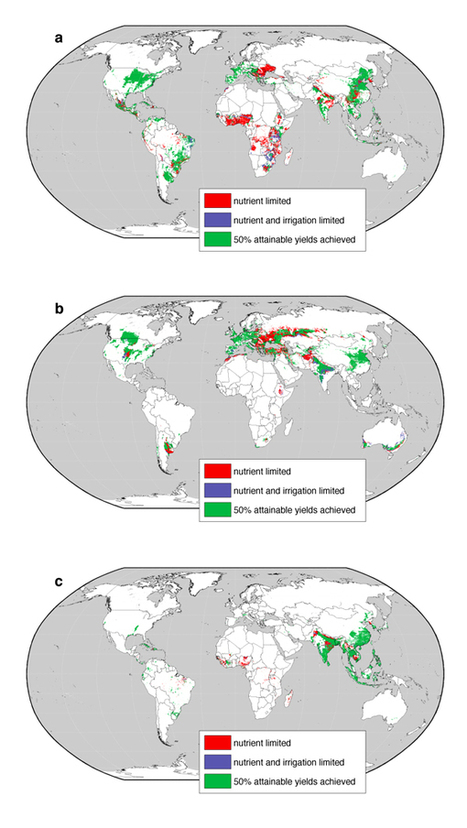

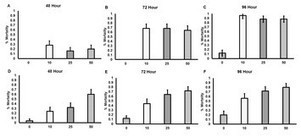
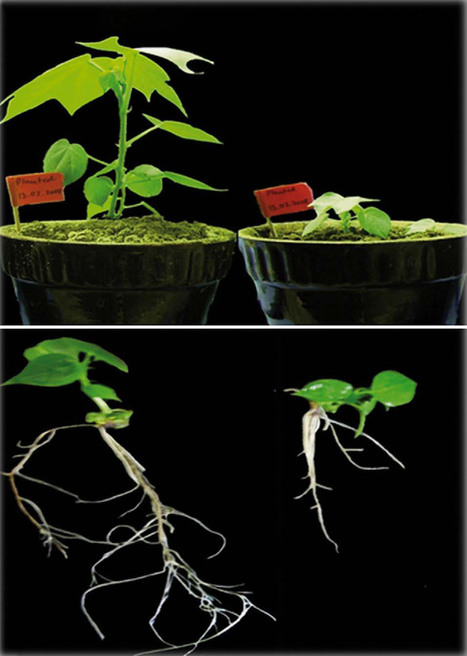
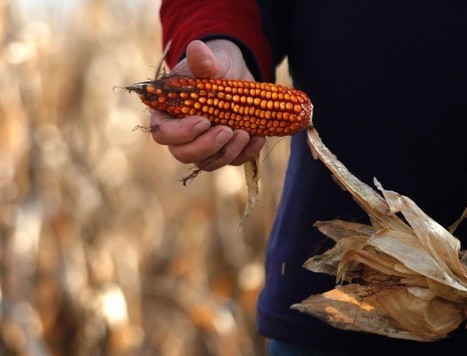







The good folks at NVIDIA have made the recent 324 GTC conference sessions freely available. With topics like Omniverse, Bots, Digital Twins, Autonomous Vehicles and extensive applications of AI , visualization and simulation from experts around the world. They are worth watching and investigating. Enjoy (and thanks NVIDIA!!)